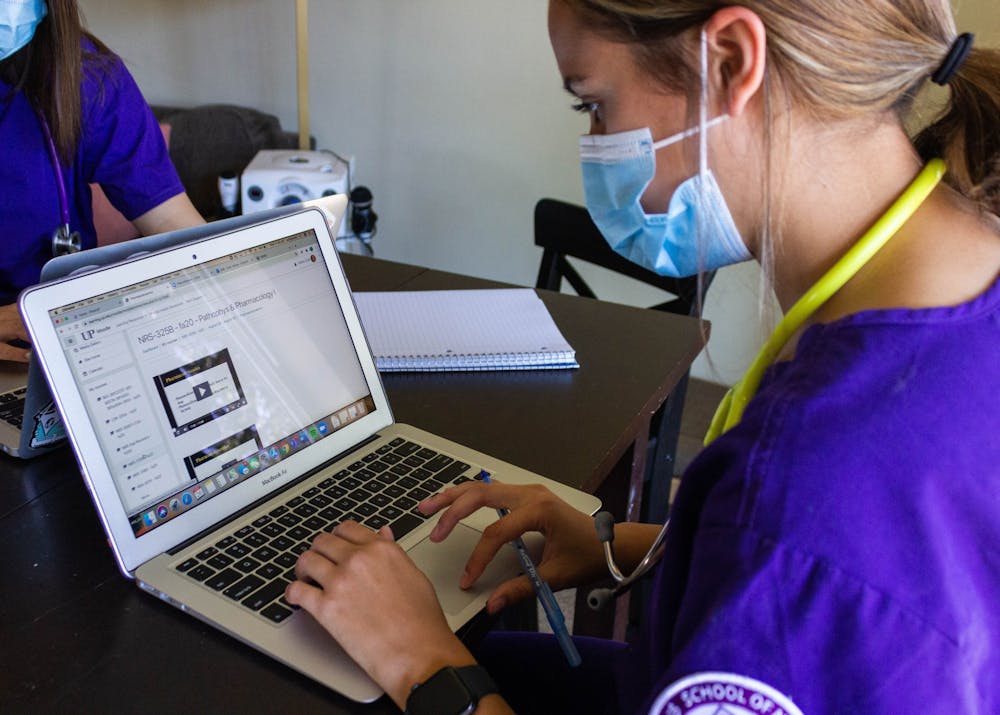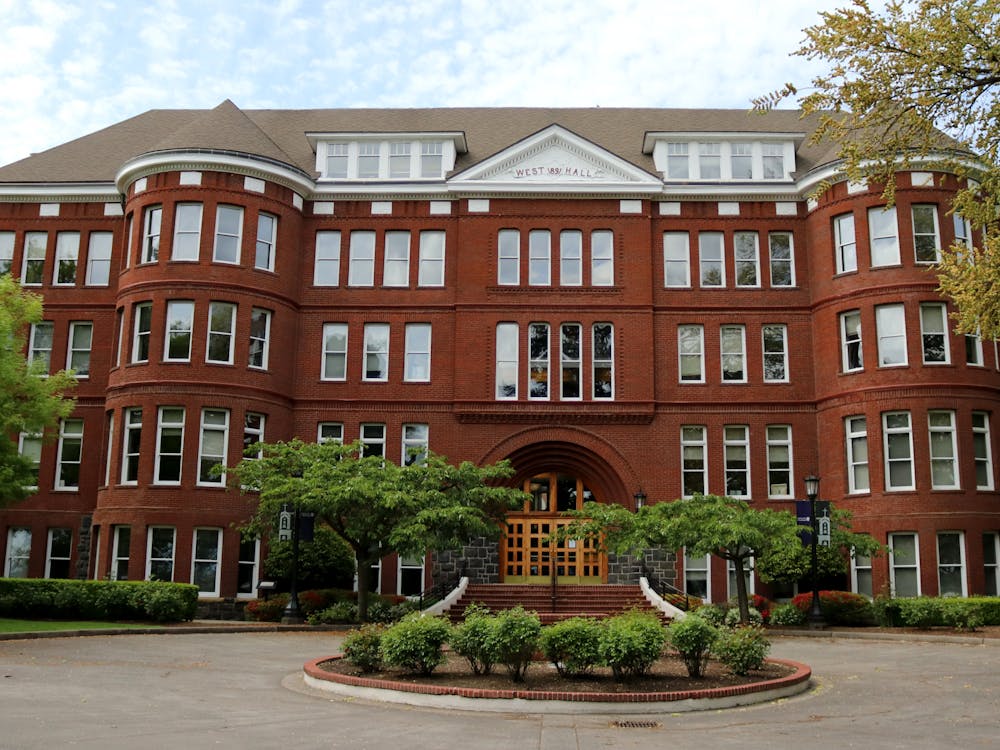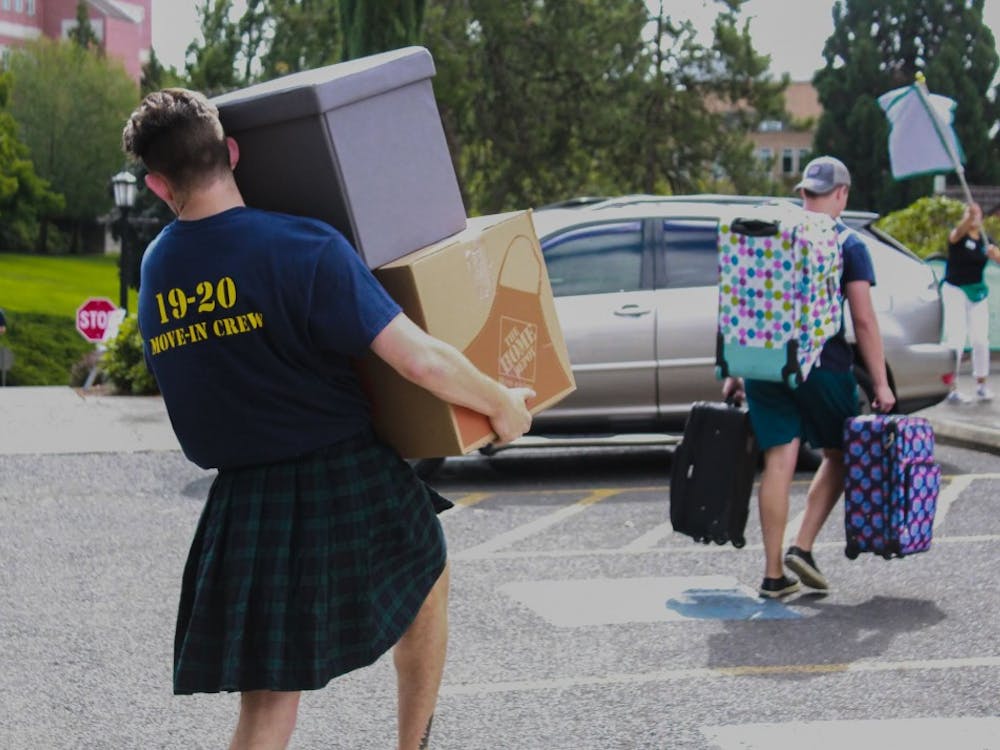In the midst of the coronavirus pandemic, the University of Portland School of Nursing (UPSON) has elected to make some upper division clinicals and simulated health center activities a virtual experience. Now, students and faculty are struggling to adjust to this new way of learning.
“The School of Nursing recognizes what an incredibly difficult time this is - the COVID-19 pandemic has upended life as we know it and especially for our nursing students,” Elisa Majors, the associate director for academic counseling and student success initiatives, said.
In previous years, all clinicals were held in person at hospitals, schools, or clinics. Nursing students would shadow senior nurses, get hands on experience with patient care and observe the fast pace of their future career. Now, some of the clinical placements will look quite different.
“This is not what I was expecting my junior year to look like,” junior nursing major Madeline Olson said. “I may still get to interact with patients and nurses, but I’ll miss out on the experience of getting to meet people, face-to-face.”
Olson was placed in online clinicals, which will follow a telehealth format, and like most nursing students, she had no say in her placement. Students could opt to be placed online, but only 16 students out of a cohort of 234 decided to do so according to Michelle Bickley, clinical services manager. Additionally, all students from Hawaii were automatically placed in the online clinical.
“At the time of placements, we had news that Hawaii may restrict travel for residents due to COVID-19 increases, and made that decision so those students would not miss clinical hours if they were unable to arrive on campus in time,” Bickley said.
To complicate things further, some of the clinical sites that would usually account for many placement slots in years past have declined to take on students this year. Schools across Oregon elected to go online and nursing homes experienced COVID-19 outbreaks, forcing them to decide not to host students until the virus was under control.
Despite this loss, the UPSON has tried to structure the online clinicals to still allow students to get the same experience as those in person. The format will allow students to connect with real nurses and patients, ask questions, and perform virtual care in real time. This will also allow students to practice telehealth medicine, the long-distance distribution of care via computer programs like Zoom, which many hospitals and clinics have become dependent on during the pandemic.
“A few of our clinical sites that are remote engage with populations such as children or middle/high school students ... and another remote clinical site is working with seniors and families in residential living, where our students will engage with nurses on Zoom calls to these residents, addressing social isolation and health care questions,” Beth Baynes, lead faculty for population health and wellness professional practice, said. “Many organizations are now delivering healthcare through these very same methods of remote access, so it is exciting that our students are getting to engage in these same activities.”
Some students placed in online rotations, however, don't share this excitement.
“Telehealth may be important, but next semester I will be entering a clinical setting where more will be asked of me and unlike my peers, I will not have had that essential first exposure,” Olson said. “This lack of experience in a hospital setting makes me nervous for when I finally am placed in one and I’ll have to take on more responsibilities.”
In addition to the shake up in clinicals, the Simulated Health Clinic has also been made partially virtual. Usually, the simulation lab is held in Buckley Center on campus. Students meet with faculty and a patient actor, walking through simulated real life scenarios. Now, these steps will take place exclusively on Microsoft Teams for juniors, while seniors will take a hybrid approach.
“For our NRS 306 students, ... simulation delivery occurs exclusively on Microsoft Teams, in the form of telehealth-type visits,” Michelle Collazo, the simulated health center manager of content and development, said. “For our NRS 308 students, ... simulation delivery occurs both in person and on Microsoft Teams. All patient care happens on campus in the Simulated Health Center.”
This approach is meant to help reduce the number of people in and out of the simulation lab, a safety measure the UPSON felt was necessary. This reduction in the number of on-campus simulations will also help the university with contact tracing if someone becomes sick.
While it may be online, the simulations will still include working in real time, with real people. A true virtual simulation lab would involve using software to simulate patients, something UP does not currently do. This real-time online work is meant to reflect new advances in medicine, specifically the recent move many providers have made to Telehealth appointments.
“Telehealth is incredibly relevant in healthcare, especially during a pandemic,” Collazo said. “It is essential that telehealth is included in the curriculum so they are best prepared for current nursing practice.”
Despite the efforts of the UPSON to keep the learning experience consistent for all students, many still feel like their education will be lacking and are nervous for what the future holds.
“I am thankful that the nursing school has brought in telehealth and they’re doing their best to give us some kind of simulated experience,” junior nursing major Ashley Cole said. “But it’s a little disheartening to think that I could someday be in a hospital and feel unprepared. I wish they felt they could keep us all safe and do the simulations in person.”
With the uncertainty produced by the pandemic, students and faculty have struggled with what this means for their educational experience. The 2020-21 academic year will look quite different from years past, especially for the school of nursing.
“The effects of COVID-19 will continue to be seen throughout the nursing profession,” said Majors. “Students in nursing school during this time are in a unique position to see how the profession they are entering into responds to a crisis. They get to see how nurses are working together to protect their patients, themselves, other nurses, and their communities. Now is an opportunity for our nursing students to truly understand the strength of the nursing profession.”
Mia Werner is a reporter for The Beacon. She can be reached at wernermi22@up.edu.








